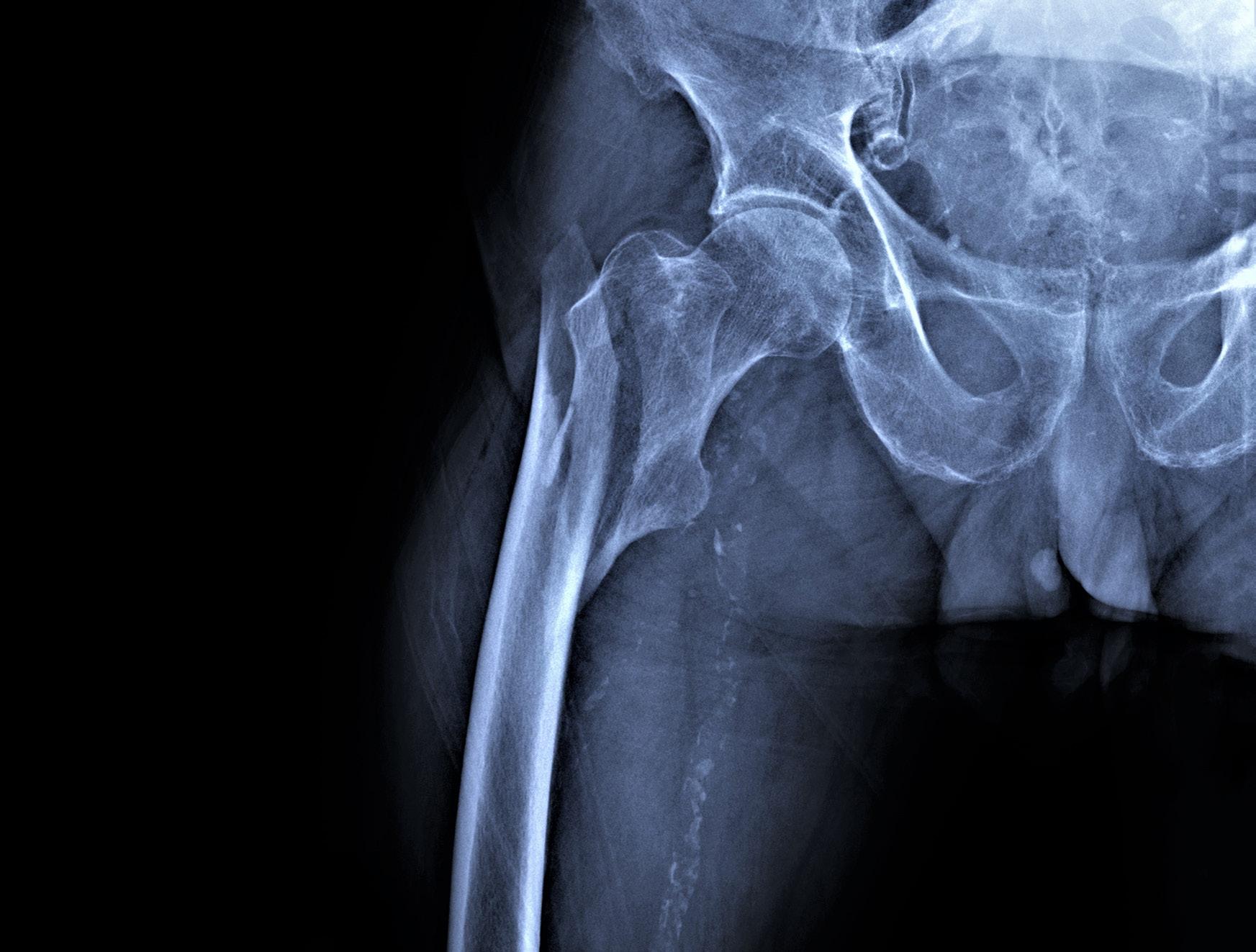
9 minute read
A response to the letter by Lewis et al. from the authors of: COVID-19 causes a SHiFT in the sands for proximal femoral fracture management?
Michael Cronin, Mark Mullins, Praveen Pathmanaban, Paul Williams and Matthew Dodd
Letter originally published 22 April 2020 in reply to: A letter in response to: COVID-19 causes a SHiFT in the sands for proximal femoral fracture management? A plea for caution. https://www.boa.ac.uk/policy-engagement/journal-of-trauma-orthopaedics/journal-oftrauma-orthopaedics-and-coronavirus/a-letter-in-response-to-covid-19-causes-a-shift.html.
Advertisement
We welcome the opportunity to reply to the letter by Lewis et al. in response to our paper. We hope our response not only answers the questions raised but also manages to clarify the ethical dilemmas the article was attempting to raise.
We agree entirely with ‘a plea for caution’ and wish to stress at the outset that a decision to not operate on a patient with a proximal femoral fracture flies in the face of the traditional dogma and as such challenges every Orthopaedic cell in our bodies. It is not a discussion that was taken lightly and has been discussed thoroughly with the Health Boards Ethical committee. We hoped to raise two ethical discussions and now realise that we need to elaborate on these for the process to be fully understood.
The first ethical dilemma is how we treat patients in a healthcare system where capacity is significantly outstripped by demand. We hope that this situation never occurs in any Health Board but it is surely essential that you have thought about how you would deal with it, if it ever were to occur.
In answer to your first question, “Is the scoring system indicated at present because of a serious and severe shortage of beds/surgeons/operating lists etc.?”
As stated, the protocol would only be used in an extreme situation where capacity fell below 20% (an arbitrary figure to be debated locally).
We had hoped that readers would have assumed that as Doctors we would exhaust all options to improve this capacity. We have optimised internal staffing models and attempted to recruit extra staff internally. We have investigated extra internal HB capacity such as Singleton and Neath Port Talbot Hospitals, but they rely on the same staff pool. We are constantly exploring
the option of extra capacity from neighbouring Health Boards and have been given some access for ambulatory trauma but not Proximal femoral fracture patients. We have even suggested to the Health Board that a final option would be to ‘close’ the Orthopaedic on-call in SBUHB and divert ambulances to neighbouring trusts, we are yet to receive a response.
If despite these measures, any hospital was to be in a position where you CANNOT treat all of your patients, how would you plan to decide on who to treat? Would you still try and treat them all, admitting that the mortality rate for the whole group would be significantly raised? Using data from the last three weeks, had we been reduced to 20% capacity, by day 14, all patients would be waiting nine days for surgery and rising on a daily basis, with the potential COVID-19 tsunami still yet to arrive.
The ethical argument used for healthcare systems where demand significantly exceeds capacity is that of Utilitarianism. As discussed in the original paper, treating the population for the ‘greatest good’ remembering that this is not where we want to be but where we may be in extreme situations once everything else has been exhausted. These decisions must of course be revisited on a regular basis and any daily change in capacity used as efficiently as possible.
The ethical argument of utilitarianism in pandemic medicine planning is probably the hardest concept to grasp and accept. The concept of treating ‘fittest first’ goes against every aspect of our normal proximal femoral fracture evidence and practice. This concept makes us so uncomfortable that we felt opening
the debate to the wider community was was discussed in the original paper but for clarity, important. In our opinion, these decisions must this has been ‘truly’ reduced by a 31% absence be agreed at Health Board level and with clear rate across theatre staff (sickness, shielding, etc.). agreement of the ethical Staffing case mix shows last committee, which we not week, we had only three only have, but have been actively supported by “Despite the fact MSK theatre staff available to work across a seven day, them for raising the topic. that critical care bed 24-hour rota. The suggestion that capacity has not been Maybe more importantly, Andrew Goodall’s statement that “Urgent and Emergency services breached, theatre capacity has been despite the fact that critical care bed capacity has not been breached, for both physical and mental illness are still ‘artificially’ reduced theatre capacity has been ‘artificially’ reduced further open and accessible” in Wales needs to be openly and critically discussed. further by the removal of staff to cover by the removal of staff to cover critical care and other surge areas. In total, The statement from Lewis et al. that “A&E attendances are down critical care and other surge areas.” Morriston currently has only 46% of normal theatre staff available to work, and 60%, Health Boards have in the theatre environment 49% critical care bed where all patients are vacancy and staff sickness treated as presumed is only 9.2%”, pays no respect to the fact that COVID-19 positive there is an increased number individual Health Boards have varying metrics. of staff required per theatre (up to 21 per shift, per theatre, if using a 3 zone model). We must In Swansea Bay UHB demand has certainly not also at this stage include the fact that as a Health reduced, we have admitted 58 Proximal Femoral Board, even before the COVID-19 pandemic, Fractures in the last 24 days. Theatre capacity we have been running a trauma service at
significantly insufficient capacity. Even before COVID-19, on a weekly basis, elective lists were cancelled in order to meet our trauma demand. This is despite regular requests over the past decade to the Executive Board to improve trauma capacity. Considering all of these factors, it should be easy to see how any hospital can quickly be reduced to breaking point.
The second ethical dilemma is therefore, the national decision and LHB interpretation of this, to put the care of potential COVID-19 patients (the size, timing and severity of the peak unknown), ahead of the care of acute patients currently in the hospital. This of course is outside the control of the Orthopaedic department, but we can assure you that we have raised this consistently over the past four weeks with the Executive Board and have yet to receive a satisfactory response.
If we wish to look outside of the ‘orthopaedic box’ we must also be cognisant of the fact that even as capacity increases, we must balance the care of our patients with those of other specialities. Currently in SBUHB we have a list of 143 ‘time critical’ cases (mainly cancer) that are not even being put into the daily discussion for theatre access. The recent publication by Prachand et al. in the Journal of the >>
American College of Surgeons 1 eloquently equate to higher mortality rates and can discusses this dilemma and interestingly the therefore be used ‘fairly’. authors developed a scoring system to try and enable efficient management of what they In no way do we suggest that our SHiFT score term “medically-necessary, time sensitive is validated but the alternative of subjective procedures” during decision making is the COVID-19 certainly no more pandemic. “The Royal College of appropriate and we suggest much less In response to the second question “Is the SHiFT scoring
Surgeons described a potential pandemic situation so. We are happy to discuss the details of the protocol, including system supported by the established when facilities and staff changes such as removing the option literature?” This raises the are stretched “beyond the edge”. Inevitably should of treating patients outside of hospital. However, we must question of how you may wish to stratify patients. this occur, this will result in a compromise to all levels of suggest that again you all consider what would happen if your Ethical dogma agrees that a principle of care. In such a situation the hospital truly had NO beds left, do you have fairness must be applied (treating like patients alike).
SHiFT triage system may present valuable prognostic a plan? If so, share it, reconsider it daily and be open to criticism, By using objective scores that have been proven to relate to information. We have not reached this stage.” that in our view is the whole purpose of the Transient Journal. mortality, we have attempted to exclude We also in no way the argument that want to suggest that the characteristics are irrelevant. For example, the small literature review included should age cannot be used as a discriminator without be used to justify conservative treatment of evidenced reason. The NHFS clearly provides proximal femoral fractures. The evidence as evidence that increasing age and male sex correctly discussed by Lewis et al. is in some

cases many decades old and provides no basis to suggest that non-operative treatment is a good thing. We accept that non-operative treatment will lead to poorer morbidity and mortality for this group. However, please remember our initial premise is that this is only to be used at the extreme lack of capacity where surgery must be rationed.
Using the conclusion of Lewis et al., “The Royal College of Surgeons described a potential pandemic situation when facilities and staff are stretched “beyond the edge”. Inevitably should this occur, this will result in a compromise to all levels of care. In such a situation the SHiFT triage system may present valuable prognostic information. We have not reached this stage.”
Four weeks ago, the NHS England specialty response ‘Clinical guide for the management of trauma and orthopaedic patients during the coronavirus pandemic’ quoted Dr Daniele Macchine, Bergamo, Italy, 9 March 2020, “…and there are no more surgeons, urologists, orthopaedists, we are only doctors who suddenly become part of a single team to face this tsunami that has overwhelmed us…” 2 .
We now feel hopeful that this will not be the case in the UK but when our paper was written we appeared to be faced with a local ‘Perfect Storm’ and hoped that sharing our thinking and ethical dilemmas would spark debate and make others consider their own plan. This certainly appears to be the case. n
References
1. Prachand VN, Milner R, Angelos P, Posner MC, Fung JJ, Agrawal N, et al. MedicallyNecessary, TimeSensitive Procedures: A Scoring System to Ethically and Efficiently Manage Resource Scarcity and Provider Risk During the COVID-19 Pandemic. J Am Coll Surg. 2020. [Epub ahead of print].
2. NHS England, (2020). Clinical guide for the management of trauma and orthopaedic patients during the coronavirus pandemic. Available at: https:// www.england.nhs. uk/coronavirus/ wp-content/uploads/ sites/52/2020/03/ C0274-Specialty-guideOrthopaedic-traumav2-14-April.pdf.










